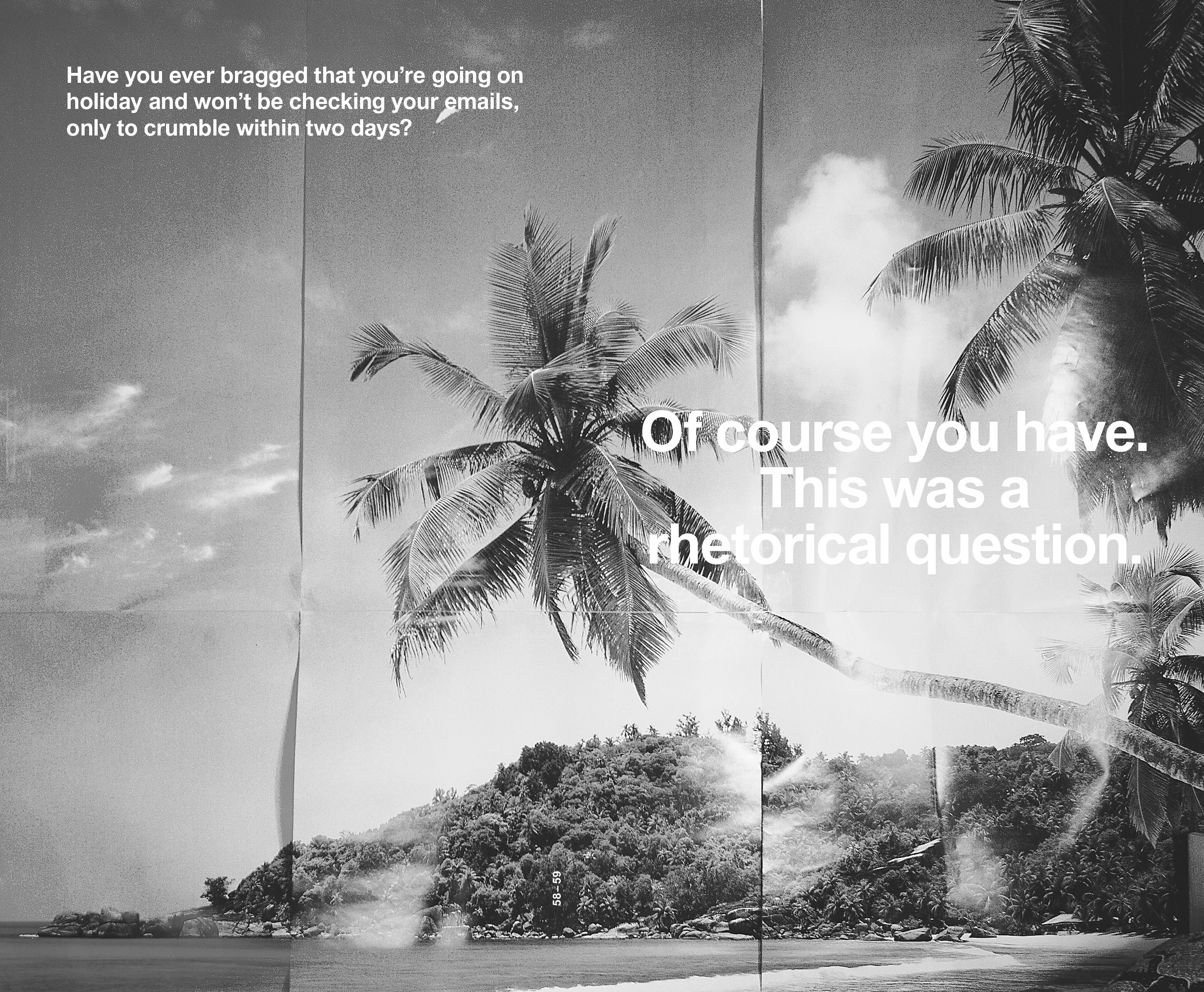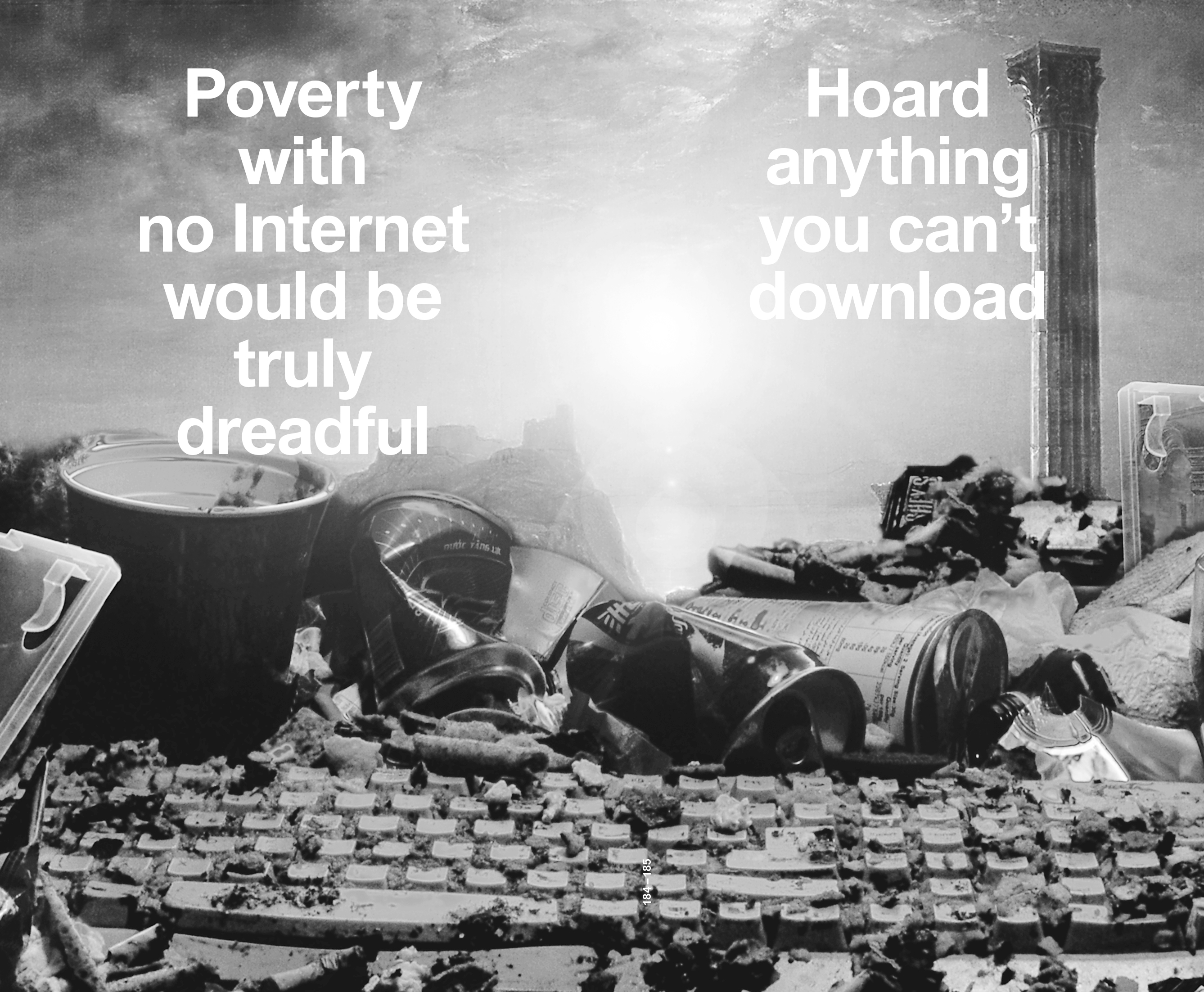Dear reader: Is it just me, or are we getting a little too addicted to the present tense?
We fear that the Internet and social media have cut down our attention spans, making us unable to, say, enjoy a long novel or even pay attention through a two-hour movie without checking our phones. But what I think is actually happening is that we’re more addicted to culture than ever. We want more life than ever. We want to consume everything, all at once, and every minute spent focusing on a book or a film rather than refreshing our news feeds takes us out of the present and thus that much more likely to miss out on something. Miss out on anything.
Or perhaps it’s The Age of Earthquakes that’s making me feel this way. It’s a small book with an iridescent cover featuring a globe that has been smushed into unrecognizability, like Thomas Friedman on hallucinogens. It’s subtitled “A Guide to the Extreme Present” and was written by three men who would know something about the present: Shumon Basar, an experimental writer and editor; Douglas Coupland, a famed novelist and artist; and Hans Ulrich Obrist, a curator of visual art and perhaps the best-traveled human being in the world.
We want to consume everything, all at once, and every minute spent focusing on a book or a film rather than refreshing our news feeds takes us out of the present and thus that much more likely to miss out on something. Miss out on anything.
What they tell us on the back cover is instructive. The phrase “You are the last generation that will die :-/“ repeats in a seemingly infinite loop of text. Will we? At the very least it seems that we will never know, since we’ll be dead when the future happens.
The book is full of these evocative koans cast in the language of the Internet and displayed manifesto-style, one sentence per page. “Memory is irreversibly addictive,” readers are told. “Speed is irreversibly addictive.” “Maybe it’s okay not to want to be an individual.” Taken together, the pronouncements are a kind of philosophical Anarchist Cookbook for the online era, when we are in touch with everyone at once all the time, or like to feel that we are, and connected moment-by-moment to the shifting consciousness of human culture.
Like Marshall McLuhan’s iconic dictum “the medium is the message” or the staccato bursts of meaning of George W.S. Trow’s essay-book In the Context of No Context, The Age of Earthquakes is an abstract representation of how we feel now about how we are now. It’s a book insistently engaged with the present tense. It is both a wave and a particle; content and form. Perhaps it is the 21st century’s first book-meme.
It is also incisive. “If he doesn’t feel intimate 24/7 he feels dead,” the authors pose. Have you ever felt that, the need to always be disclosing, to always be listening to other disclose? I don’t think I’m alone in acknowledging that I certainly have. There are times I crave that online connection, laying in bed illuminated in the dark only by the cold glow of my iPhone screen. The Internet, after all, is people, and that’s really why we’re always so distracted.

How should we survive this burgeoning addiction to stimulus, to living in “the extreme present”? The answer encoded in the book seems to be that perhaps we can’t. But then again, the book, more like a design object than a text, is also a product of the culture it portends to critique. It plays to our love of image appropriation, stealing New Yorker cartoons for its pages and plastering stock images with sans-serif words in a format instantly familiar from LOLcats. It is born for screens, though it exists in print.
The book is entertainment masked as critique. Or is it critique masked as entertainment? Either way I could see it being sold on shelves at Urban Outfitters. It constantly reminds its readers that they are engaged in a hip intellectual dialogue. But then it’s not just Obrist et al. Everyone’s struggling to be in the present, a task that might sound easy but is increasingly impossible outside of art.
Conceptual artist On Kawara tracked his life day-by-day, painting single dates on colored canvases that are now on chronological display at the Guggenheim museum, a life lived in moments. Karl Ove Knausgaard’s My Struggle, volume four of which comes out in April, is a similar artifact, a word-by-word reconstruction of the entire flawed existence of a single human being. It is impossible to feel alone while reading it, pushed along by Knausgaard’s insistent voice speaking in your ear, telling you about his days. Rachel Cusk’s recent autobiographical novel Outline takes a similar tack, limning the character of the narrator by the way she talks to a constellation of people that define her immediate world.

Along with The Age of Earthquakes, these works serve our fascination with the present and jump into the flow of time along with us. Perhaps that’s why we like them. They connect us. Do you understand what I’m getting at? Even in this short essay—a term I use in the context of the original French, inspired by the great proto-blogger Montaigne, as in an expedition into meaning, a trial to hit the right note—I feel like I am constantly in danger of losing your attention and so I want to be as close to you as possible, so that we experience the meaning together.
For what else is there to do to fight this systemic present addiction besides give in to it? If I’m being honest, it’s the only way I feel that we, writer and reader, can truly connect. It’s the only way I want to feel—connected—even if it’s exhausting.
I admit, the present sometimes makes me tense. As The Age of Earthquakes puts it, “I miss doing nothing.” Tell me if you agree. Because there’s nothing worse than being alone in our loneliness.





